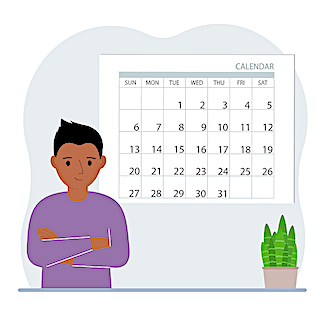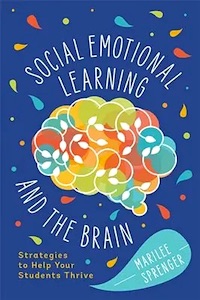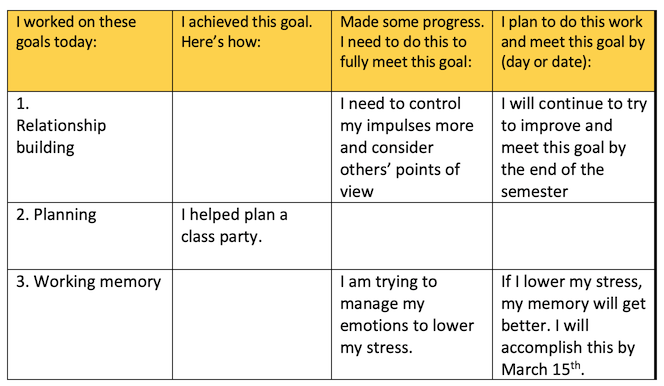How Executive Function Links SEL/Academics
Author, educator and consultant Marilee Sprenger’s next book for ASCD will explore the connections between social-emotional learning and executive function. “SEL has students ready to learn, while EF is necessary for learning to take place.”
By Marilee Sprenger

Within the scope of SEL we find positive environments, relationship building, and supportive teachers who check in to see how their students are doing and feeling. We know these “backbone” elements of SEL will help students learn.
Yet there is one more area we need to address to make sure SEL programs also lead to academic success and the sense of self-efficacy that comes with mastery.
Even in our most positive and supportive environments, we still have students who have difficulty with academic content. Those students need what some of their classmates already have – executive function skills. There’s a connection between SEL and EF. SEL has students ready to learn, while EF is necessary for learning to take place.
Just what is executive function (EF)?
Executive function skills are the mental processes that enable students to plan, focus their attention, remember instructions, and get things done!

EF skills are not hard-wired in the brain. We aren’t born with them. But EF skills can be learned and must be learned for success in school and life. Under the right conditions, they can develop rapidly between the ages of 3 and 5, but we have many students who aren’t growing up in environments conducive to EF growth or who have deficits that prevent this skill development from occurring without supports.
As a middle grades teacher you will be happy to know that the brain’s push to acquire EF skills spikes during adolescence. Although this spike occurs naturally, it nevertheless needs to be enhanced, and the classroom is the perfect place in which to do this.
A closer look at what’s involved in EF
Executive function is a set of cognitive processes that not only provide the ability to control thoughts and behavior but also emotions. I like to concentrate on the following six:
- Attention and focus: The ability to tune in and stay on task.
- Working memory: The small amount of information that can be held in mind and used in the execution of cognitive tasks.
- Cognitive flexibility: The ability to switch between thinking about two different concepts or to think about multiple concepts simultaneously.
- Planning and organization: The ability to sequence your steps to reach your goal.
- Impulse inhibition: The ability to inhibit natural, habitual, or dominant emotional or behavioral responses in order to select a more appropriate emotion or behavior that is consistent with completing our goals
- Self-monitoring: How we understand our behaviors and how we adjust to make changes for the future.
Let’s take a quick look at each skill area, mention the SEL connection, and learn a few steps we can take to enhance EF development in those spiking brains.
1. Attention and Focus
The bottom line is that students can’t focus and attend if emotions get in the way. Self-management, the SEL competency, is necessary for students to attend. Emotions cloud that pre-frontal cortex, take up memory space, and keep kids in a “fuzzy” zone. If they can name their feelings they can handle them, so social awareness is necessary for this skill. Then they can choose what they pay attention to. They are no longer prisoners in their own minds. It also takes impulse control to focus and attend.
Try this: chunk things down – this means give one direction at a time, use mini-lessons, set that timer. Some kids need to know that they only have to attend for a short period of time – practice makes perfect, incorporate some movement to give some bursts of oxygen and dopamine in the brain.
2. Working Memory
Working memory lets us hold on to small bits of information – like being able to remember the rules of a game. The SEL competency that is relevant here is understanding social relationships and taking into consideration how others are feeling – viewing events from others’ perspectives and even make friends in the process.
Try this: shorter lessons, note-taking, and playing games like Concentration will all help students call on working memory and expand that space. Use mindfulness activities…this allows a student to begin to control their mind’s wanderings. I encourage middle schoolers to look at the importance of working memory in their lives. Do they need to remember directions to a party? Do they need to keep track of the “how-to” information in a videogame? By making it personal, their brains and working memory becomes more important to them! Mnemonics and visuals can also help train the brain to use working memory and improve executive function.
3. Cognitive Flexibility
Cognitive flexibility and SEL are an easy pair. “I can choose my responses or discover a new way to solve a problem. If I am aware of my feelings and my reactions, I can monitor my behavior so I don’t interfere with others in my class or group.”

4. Planning and Organization
Helping students with decision making, an SEL competency, also helps with Planning and Organization, the EF skill. Planning/organizing requires a series of interlocked decisions. The SEL and EF skills go hand in hand throughout the process.
Use think-alouds and modeling. Some kids with poor EF skills need to hear and see why we do things. For instance, if you talk about why as you put your research paper in the orange folder in the file box on the table, they will hear that it is important if they do that and see how to do it.

5. Impulse Inhibition
It’s difficult for middle schoolers to not want to jump into a conversation with thoughts and ideas. But it’s vital for them to learn this skill. When we look at the SEL competencies of social awareness and building relationships, we understand that students will need to use impulse control throughout their lives if they want to interact successfully!
If you see kids exhibiting risky behavior, losing track of time, or having unrealistic expectations of themselves or others, they are showing signs of a lack of impulse inhibition.
Role play can be helpful here. Involving students in skits or other activities where they represent someone else who has to control themselves can provide practice and also insight, if the role play includes opportunities to experience the responses of others when they do inhibit impulses. Role playing can be done within the purview of content. ELA and social studies classes offer good opportunities, as well as theatre.
Prioritizing goals, removing distractions, and providing reminder cards to students can also be helpful in developing impulse control. I’ve used post-it notes that I place on a student’s desk that might say, “You have 15 minutes to complete your paragraph.” Give direct instructions to students as in “Derek will work on his essay and have it done by 3:15, and Alishia will organize the bulletin board labels right now while the rest of you read Chapter 2 and take notes.”
6. Self-monitoring
When students can self-monitor many other EF skills fall into place. It begins with the SEL competencies of self-awareness and self-management. Self-monitoring is a metacognitive skill, and it will be helpful if your students know their strengths and their challenges.
Once they know what they need to work on (those challenges) they can develop their goals. It may begin with your coaching a student through a physical checklist of self-monitoring skills that includes things like: What were your goals today? Did you achieve them? How did you achieve them? Was there any part of your goal that you did not or could not achieve? What could you do to achieve this tomorrow?
Or you can turn these into “I” statements as part of a fill-in checklist and planning guide:
Your time investment will have a big payoff
As a middle school teacher for twenty years, I realize that this may look like an addition to all of the things you do each day (and each class period!). But if your students can learn these skills, your classroom will run more smoothly, there will be fewer distractions and interruptions, fewer teacher repetitions, and more will get done.
Just as SEL has improved the emotional climate in your room, incorporating executive function skills will improve the academic climate.

She is the author of Social-Emotional Learning and the Brain: Strategies to Help Your Students Thrive (2020) and other ASCD titles, including The Essential 25: Teaching the Vocabulary That Makes or Breaks Student Understanding (2021 – see her article). Marilee can be reached at brainlady@gmail.com. Find all her MiddleWeb posts here.































